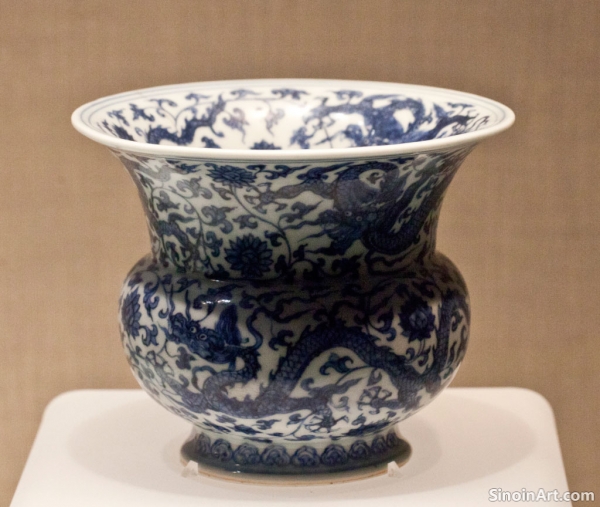The Rise of Blue and White Porcelain in the Yuan Dynasty
|
The Yuan Dynasty marks a pivotal moment in the history of Chinese ceramics, primarily due to the emergence and rapid development of blue and white porcelain. While blue and white wares had appeared in earlier periods, it was during the Yuan that these pieces, decorated with cobalt blue under a clear glaze, rose to prominence and became a defining feature of Chinese porcelain. The Yuan dynasty represents the beginning of a new approach to ceramic design, and the influence of Yuan blue and white porcelain can still be seen in pottery traditions today.  The use of cobalt, a mineral that provided the blue color, was imported from Persia, highlighting the extensive trade networks of the Yuan Dynasty. The unique combination of cobalt and a clear glaze created a new visual style that would become a defining element of future Chinese pottery. The import of this colourant from far away lands also highlights the global interconnectedness of cultures and the importance of international trade.  Yuan blue and white porcelain is characterized by its large, bold designs, which often include scrolling floral patterns, dragons, phoenixes, and other auspicious motifs. The designs were often expansive and intricate, created using freehand brush techniques that also emphasized the artistic skills of Yuan potters.  The technical innovations during the Yuan period allowed for higher firing temperatures, which resulted in a harder, more durable porcelain that was ideal for both domestic use and export. The creation of extremely high quality porcelain made this a highly desirable product both within China and beyond. The impact of Yuan blue and white porcelain on subsequent ceramic traditions, both in China and around the world, is undeniable. Its enduring popularity and influence underscore its position as a major achievement in ceramic history. The widespread global popularity of this type of porcelain makes it one of the best-known examples of Chinese pottery. |
Tag : Yuan blue and white porcelain, Chinese blue and white, cobalt blue pottery, Yuan dynasty ceramics, porcelain history
Related information
- Yuan Dynasty Porcelain and its Place in the Silk Road Trade
- The Use of Yuan Dynasty Porcelain in Interior Design and Decoration
- The Influence of Mongol Rule: Cultural Dynamics in Yuan Dynasty Porcelain
- Collecting and Preserving Yuan Dynasty Porcelain: Challenges and Considerations
- The Rise of Blue and White: A Yuan Innovation
This article explores the role of Yuan Dynasty porcelain in the Silk Road trade, both by land and sea. It highlights its importance as a commodity and as a cultural ambassador across Asia and the Middle East.
This article explores how Yuan Dynasty porcelain, both original pieces and reproductions, can be used in interior design to add a sense of historical elegance, artistic depth, and a focal point to living spaces.
This article explores the impact of Mongol rule on Yuan Dynasty porcelain, highlighting the cultural fusion of Chinese and Central Asian influences and the role of Mongol patronage in shaping artistic styles.
This article discusses the challenges and considerations associated with collecting and preserving Yuan Dynasty porcelain, highlighting issues of authentication, ethical acquisitions, and proper conservation.
The Yuan Dynasty (1271-1368) is pivotal for the rise of blue and white porcelain, marked by bold designs, large scale, and the innovative use of cobalt underglaze, which significantly influenced later Chinese ceramics.